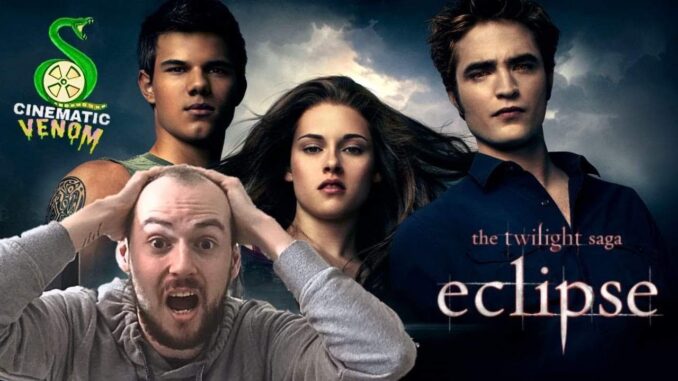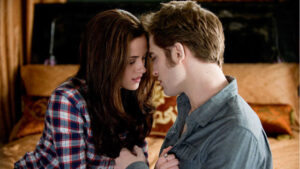
‘Twilight’ turns 15: Did the ‘Twilight’ saga lead the way for ‘Barbie?’
Romeo and Juliet. Jane Eyre and Mr. Rochester. Bella and Edward.
Comparing Bella and Edward to these couples from literary classics may seem like a plebeian folly. But with north of 160 million copies sold, the “Twilight” series crossed over from a YA fiction blip to a global phenomenon.
It’s been a little over two decades since Stephenie Meyer first dreamed the basis of the story and 15 years exactly since the first “Twilight” movie debuted.
The franchise (both books and movies) has endured no shortage of mocking, but as the 15th anniversary has approached, it’s reemerged in the cultural consciousness. Memes and trends related to it have gone viral on TikTok, amassing 28.2 billion cumulative views for #twilight alone.
And the “Twilight” franchise isn’t even over yet — reportedly there’s a new TV show on the horizon.
So, after 15 years, 160 million books and $3 billion in movie revenue, what does “Twilight” mean today? To answer that question, here’s a cultural history.
The origins of ‘Twilight’
On June 2, 2003, Meyer woke up from a dream.
“In my dream, two people were having an intense conversation in a meadow in the woods. One of these people was just your average girl. The other person was fantastically beautiful, sparkly, and a vampire,” Meyer explains on her website .

The two were star-crossed lovers who could not stay away from each other, but the vampire had to continually resist killing her (he liked the scent of her blood).
Meyer feverishly scribbled down the dream that eventually turned into a book. The Brigham Young University graduate and stay-at-home mother would write at night when her young children were asleep.
What’s ‘Twilight’ about?
For those who need a little refresher on the premise of the series, it’s this: Bella Swan moves from sunny Arizona to rainy Forks, Washington. She considers herself plain but soon all the boys in town are smitten with her.
But she only has eyes for one: Edward Cullen, a recluse who she later finds out is a vampire who has been alive for more than a century. The first book in the series, “Twilight,” is followed by “New Moon,” “Eclipse” and “Breaking Dawn.”
There’s also “Midnight Sun,” written from Edward’s perspective; “The Short Second Life of Bree Tanner,” which is an “Eclipse” spin-off; and “Life and Death,” where Meyer reverses the genders of the characters (Beaufort Swan and Edythe Cullen).
The book that started the vampire craze
The first book released on Oct. 5, 2005. But it wasn’t an immediate success.
By 2008, “Twilight” and its sequel, “New Moon,” were 26th and 37th, respectively, on USA Today’s best-selling books of the last 15 years. Not bad book sales by any stretch of the imagination, but not “Harry Potter” numbers.
In 2009, Meyer revealed 12 things that influenced her as she wrote “Twilight.” The list, published by Entertainment Weekly, included “Jane Eyre,” “Anne of Green Gables,” “X-Men Cartoons,” the band Muse, Linkin Park, My Chemical Romance, HGTV and more.
If you have read “Twilight,” this list probably won’t surprise you. Interrupting the angsty love sequences and awkward little talk are both explicit and implicit references to “Wuthering Heights” and “Romeo and Juliet.”
Thus, the ‘Twilight’ films were born
The books grew in readership, and eventually, director and production designer Catherine Hardwicke chose to direct it. She told The Hollywood Reporter she thought Meyer “had really captured the moments of first love.”
Hardwicke then got to work on making it in a movie, but not with a big studio: It was an indie film. “No one thought it was going to successful,” she said.
With a budget of $37 million, per Forbes, and a couple of “indie kids,” actors Kristen Stewart and Robert Pattinson, as the lead characters, Bella Swan and Edward Cullen, the “Twilight” fandom really showed up for the first movie. On its opening weekend, it earned $69 million, according to The Hollywood Reporter.
The strength of the ‘Twilight’ fandom
As the franchise grew in popularity, book sales went up and a dedicated fanbase developed, primarily consisting of female tweens and teens.
It wasn’t uncommon for teen girls to spend an afternoon debating if they were Team Edward or Team Jacob. As the franchise developed, The Guardian described it as “one of the most powerful new groups in Hollywood” because of how financially successful “Twilight ” had become.
As Christopher Orr wrote about in a film review of “Twilight” for The Atlantic, the movie was filled “with a distinctly teenage sense of tragedy.”
The dialogue ranged from awkward (“You better hold tight, spider monkey” is often quoted even today), to angsty, to downright clunky. But to a teenage girl, the awkward, angsty and clunky dialogue resonated.
